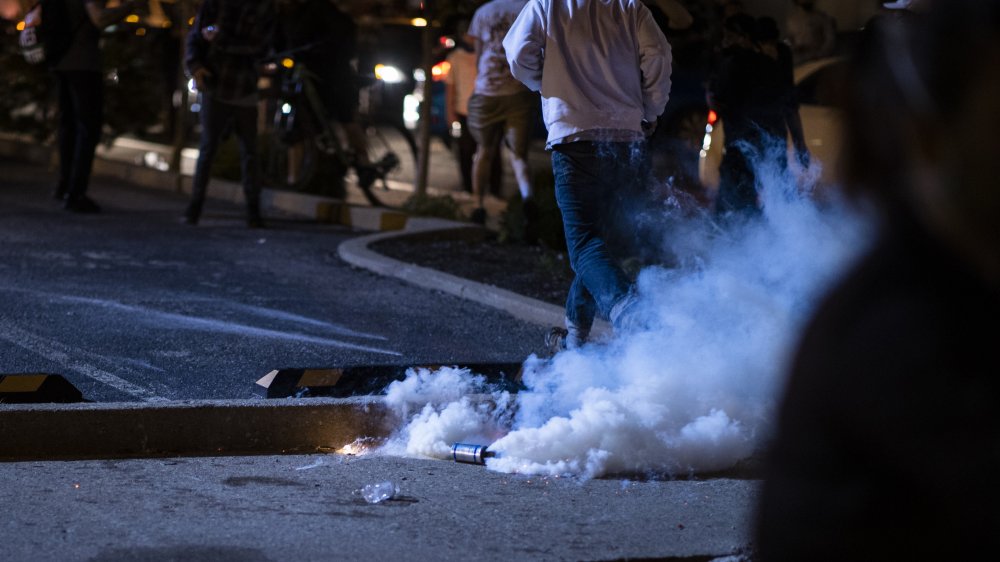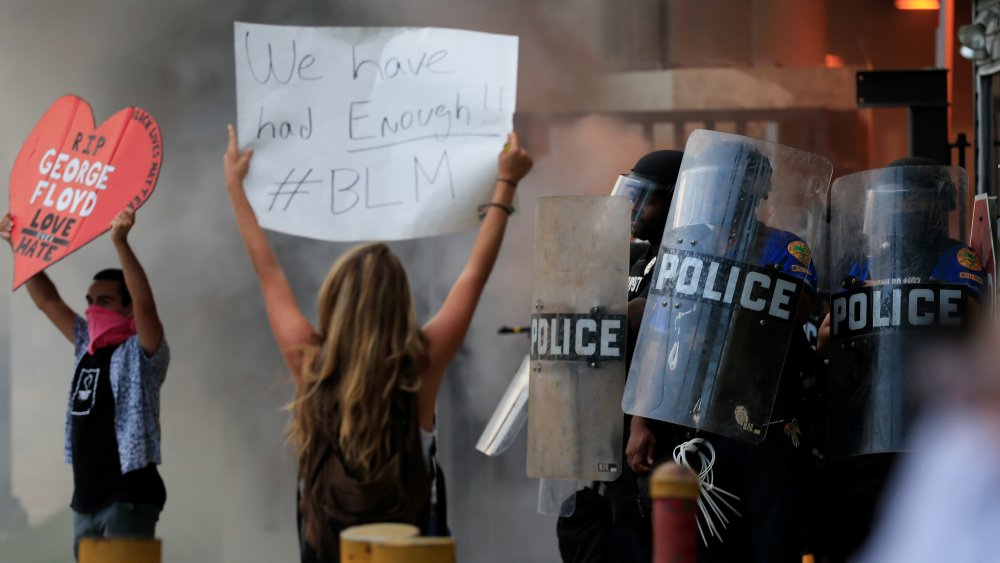The Untold Truth Of Tear Gas
According to Anna Feigenbaum, author of Tear Gas: From the Battlefields of World War I to the Streets of Today, there's evidence that French police were experimenting with a precursor to tear gas in the days before World War I, as she told Vox. But it was that European slaughterhouse that saw the first gas warfare gain in popularity, including use of what are termed lacrimators (from the Latin word lacrima, for "tear") — the chemical compound irritates (to say the least) the mucous membranes of the eyes — a stinging sensation, with excessive tearing, per Encyclopedia Britannica. Other damage includes difficulty swallowing, tightness in the chest, coughing, shortness of breath, even a sensation of choking. There were nastier chemical agents used against troops during the conflict, but tear gas worked without (usually) killing anybody.
Business being business, once the war was over, eager minds sought a way to turn that piece of the military industrial complex into simple commerce — kind of like the way Tang moved from NASA to your breakfast table, only much, more more uncomfortable. In 1928, two chemists, Ben Corson and Roger Stoughton, came up with CS gas (using their initials) — chlorobenzylidenemalononitrile. According to the Centers for Disease Control and Prevention (CDC), chloroacetophenone (CN) is also commonly used.
Military, no; civilians, yes
Tear gas is classified as "riot control agent," per CNN, and so can be used by police departments, but is banned as a military weapon by the 1925 Geneva Protocol, writes USA Today. The compound isn't actually a gas at all, but a powder that's mixed into a liquid, pressurized, and then released into the air as droplets. Delivery systems include grenade-like canisters, or through individual aerosols. Anyone hit with tear gas is disabled from action beyond wanting desperately to counteract the effects of the chemical compound.
Effecting similar results are pepper sprays, which cause instant inflammation of the eyes, nose, and mouth. Those sprays require actual contact of the spray on the target — they're also effective against bears, says How Stuff Works. It's the same substance used in PepperBalls for crowd dispersal — essentially paintball ammunition loaded with pepper spray, hitting and causing painful pandemonium for the target and anyone standing nearby.
Theoretically, tear gas effects fade about 15 minutes after the compound is removed from a person, but if it's deployed within an enclosed space or in close proximity can have other, long-term effects, including blindness, glaucoma, and even respiratory failure. Perhaps that's why, according to CNN's June 8, 2020, report, cities like Seattle, Portland, and Denver have banned its use in crowd control.

